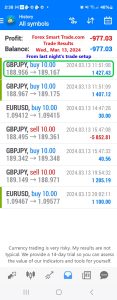Before we explain how to do multiple time frame analyses for your forex trading, we feel that it’s necessary to point out why you should flip through the different time frames.
After all, isn’t it hard enough to analyze just one chart as a forex trader?
You’ve got a billion indicators on, you’ve gotta read up on economic news, you’ve got basketball practice, a Call of Duty session, a Fornite session, a Dota 2 session, a hot date at McDonald’s, then an hour of viewing Instagram stories, and another two hours watching TikToks, etc.
The Long or Short Game
Well, let’s play a game called “Long or Short” to show why you should be paying attention and putting in the extra effort to look at different time frames.
The rules of the game are easy.
You look at a chart and you decide whether to go long or short. Easy, right? Okay, ready?
Let’s take a look at the 10-minute chart of GBP/USD at 8:00 am GMT.
We’ve got the 200-period simple moving average (SMA) on the chart, which appears to be holding as resistance.
With price testing the resistance and forming a doji, it seems like a good time to short right?
We’ll take that as a yes.
But dang, look what happens next!
The pair closed above resistance and rose another 200 pips!
Ouch! Oh well, too bad!
What the hell happened? Hmm, let’s hop on to the 1-hour chart to see what happened…
If you had been looking at the one-hour chart, you would have noticed that the pair was actually at the bottom of the ascending channel.
What’s more, a doji had formed right smack on the support line! A clear buy signal!
The ascending channel would have been even clearer on the 4-hour chart.
If you had looked at this chart first, would you still have been so quick to go short when you were trading on the 10-minute chart?
Same Data, Different Conclusions
All of the charts were showing the same price data. They were just different time frames of that same data.
Do you see now the importance of looking at multiple time frames?
We used to just trade off the 15-minute charts and that was it.
We could never understand why when everything looked good the market would suddenly stall or reverse.
It never crossed our minds to take a look at a larger time frame to see what was happening.
When the market did stall or reverse on the 15-minute chart, it was often because it had hit support or resistance on a larger time frame.
It took a couple of hundred negative pips to learn that the larger the time frame, the more likely an important support or resistance levels would hold.
Trading using multiple time frames has probably kept us out of more losing trades than any other one thing alone.
It will allow you to stay in a trade longer because you’re able to identify where you are relative to the BIG PICTURE.
Most beginners look at only one-time frames.
They grab a single time frame, apply their indicators, and ignore other time frames.
The problem is that a new trend, coming from another time frame, often hurts forex traders who don’t look at the big picture.









